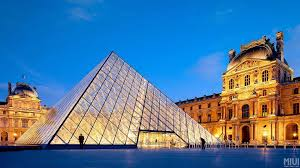architectural model making has long been a crucial element of the design process, aiding architects in visualizing and communicating complex building concepts. However, its applications extend beyond the realm of architecture, playing a significant role in the world of film and television production. In this industry, architectural models serve as a means to create realistic, captivating environments that capture the imagination of viewers. This article will explore the various uses of architectural model making in film and television production and discuss the advantages it offers to filmmakers and set designers.
- Miniature Sets and Practical Effects
Architectural model making is often employed in the creation of miniature sets and practical effects, which contribute to the overall visual storytelling in film and television. Some of the key applications include:
a. Scale Models for Set Design: Filmmakers and set designers use scale models to plan and visualize the layout of sets, allowing them to make informed decisions regarding camera angles, lighting, and overall aesthetics.
b. Miniature Effects: Architectural models are used to create intricate, realistic miniatures of buildings, vehicles, and landscapes that can be integrated with live-action footage or computer-generated imagery (CGI) to produce convincing and visually stunning effects.
c. Stop-Motion Animation: Architectural models are integral to the stop-motion animation process, providing the physical environments in which animated characters interact.
- Pre-Visualization and Planning
Architectural model making plays a vital role in the pre-visualization and planning stages of film and television production, offering several benefits:
a. Efficient Resource Allocation: By providing a clear and accurate representation of the proposed set or environment, architectural models help filmmakers and set designers allocate resources more efficiently, ensuring that time and money are spent wisely.
b. Enhanced Collaboration: Physical models enable clear communication between different departments, facilitating collaboration and ensuring that everyone involved in the production process is on the same page.
c. Problem Solving: Architectural models can help identify potential issues and challenges in the design and construction of sets, allowing filmmakers and set designers to address these concerns before they become costly and time-consuming problems.
- Maintaining Artistic Vision
The use of architectural models in film and television production can contribute significantly to maintaining the artistic vision of the director and production designer. By providing a tangible, three-dimensional representation of the desired environment, architectural models allow filmmakers to:
a. Refine and Develop Concepts: Models enable the director and production designer to experiment with various design elements and make informed decisions regarding the look and feel of the set or environment.
b. Control Aesthetic Consistency: Architectural models help maintain aesthetic consistency throughout the production process, ensuring that the final product aligns with the original artistic vision.
c. Communicate Vision to Crew: Models are an effective tool for communicating the director’s vision to the entire production crew, ensuring that everyone is working toward the same goal.
Conclusion
Architectural model making plays a crucial role in the film and television production process, serving as an indispensable tool for set design, pre-visualization, and maintaining the artistic vision of the project. By leveraging the power of architectural models, filmmakers and set designers can create captivating, immersive environments that transport viewers to new worlds and enhance the overall storytelling experience.

